Former Bosnian Serb military commander Ratko Mladic appeared before a court in The Hague Friday to hear charges of genocide. Follow the latest developments in the case here , and read a story from a survivor of Bosnia's killing fields here. In the wake of Mladic's arrest, Reuters photographer Damir Sagolj, who served in the Bosnian army during the war of 1992-95, recounted his personal recollections of working in Srebrenica:
"I've been to more than one hundred mass graves, mass funerals and witnessed the long, exhaustive process of victim identification. I've taken pictures of bones found in caves and rivers, dug from mud, recovered from woods and mines or just left by the road.
"Most of these terrible assignments were around the small, end-of-the-road town of Srebrenica in eastern Bosnia.
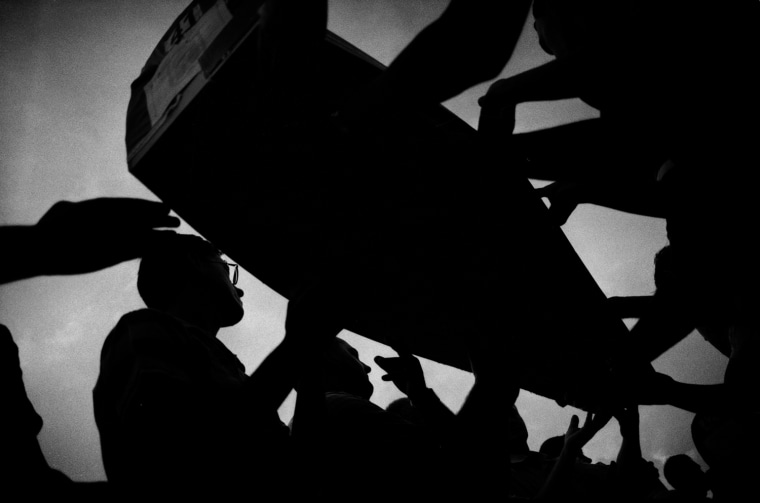
"The international criminal court says that a genocide was committed in Srebrenica in July of 1995 when Bosnian Serb forces massacred thousands of Muslims after the enclave, ironically under U.N. protection as a safe haven, was overrun by an army led by its ruthless commander.
"Ratko Mladic, a typical officer from what used to be the Yugoslav people's army, was the commander of the forces that overran the enclave. He described it as revenge upon the Turks for the events of the early 19th century. Thousands of white Muslim gravestones at the terrifying and extremely sad Srebrenica memorial remain as a symbol of that 'revenge'. Thousands are still missing, their bones hidden in heavy Bosnian soil.
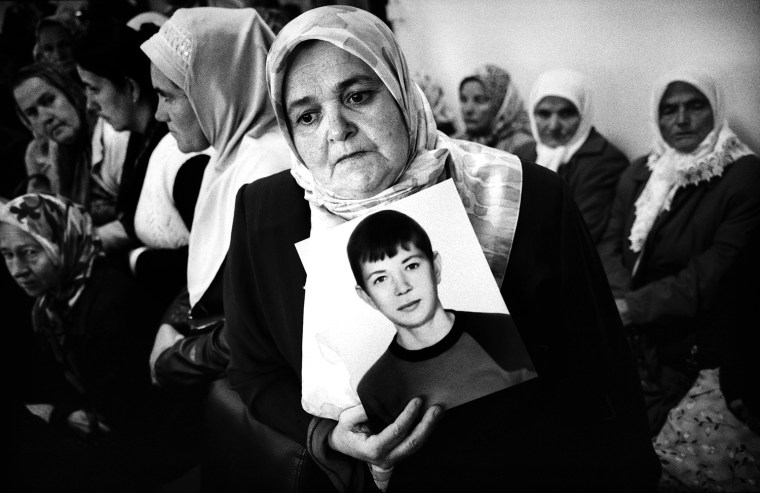
"I was in Sarajevo when the news came to us, transmitted over a noisy, primitive radio system. Local reporters from Srebrenica - who would disappear themselves over the next few days - sent the dramatic message that Ratko's troops were entering the town. We all knew it was going to be bad, but still I had no idea of the scale of the tragedy. Yes, the enclave had fallen, but the U.N. were there, so the civilians and prisoners of war should be treated in accordance with the Geneva conventions. How wrong and naive I was!
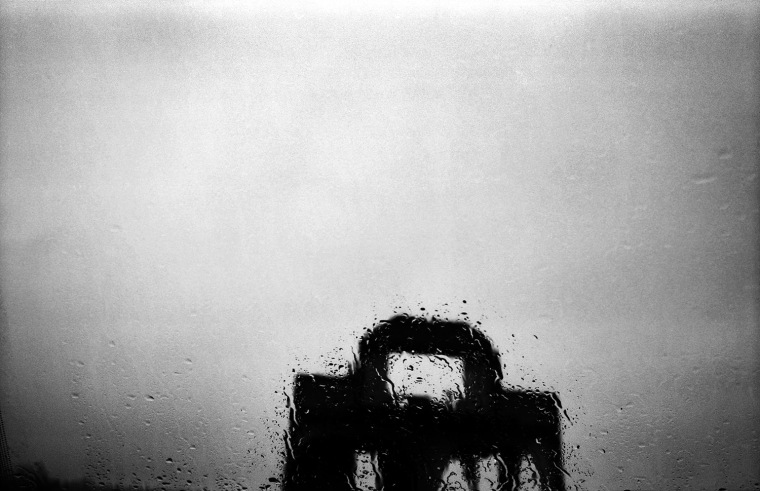
"I have never seen Ratko Mladic, I never photographed him, but his bloody signature is written all over my pictures. Every time I would go to another mass grave or a mass funeral of victims of his 'revenge', the face of a man confident he is doing the right thing would come into the frame. Sleeves rolled up, binoculars in his hands as he ordered his artillery 'Don't let them sleep. Make them lose their minds.'
"I will carry the mud from mass graves and the smell of decomposing bodies on my shoes wherever I go. I will continue shooting my Srebrenica pictures on every story of crimes against humanity no matter how far away and how different they may be.
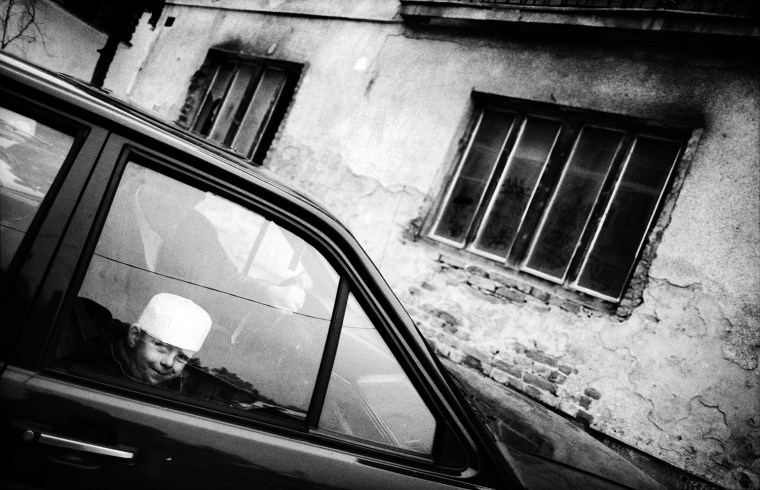
"Last week, after more than 15 years on the run, Ratko Mladic was captured in a small village in Serbia. Looking at the pictures of an old man emerging from a Belgrade court – Mladic is almost seventy now – sends chills down my spine. I'm not even sure I want to see him any more, to hear what he has to say. His words from back then were enough, there is not much else to say.
"All that is important can be understood from the pictures – a sea of coffins lined up for the funeral every 11th of July, a wrinkled face of a woman, the only survivor in her family, as she holds a photo of her dead son, bones bulldozed in the mass graves, the names on the memorial…
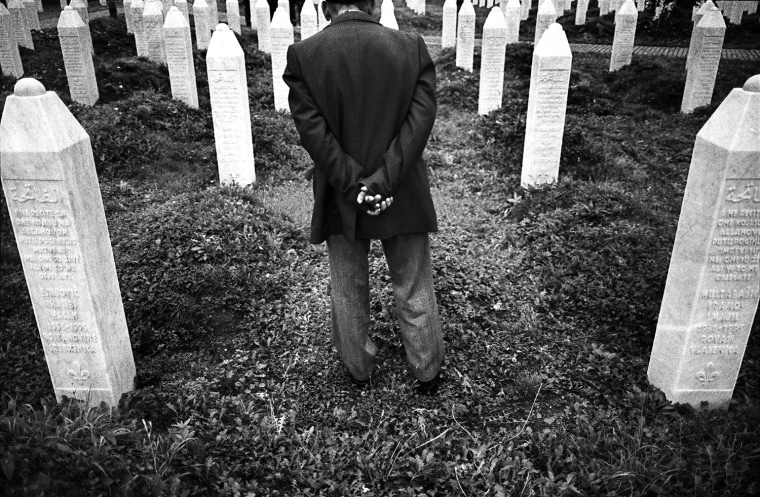
"Covering a story like this is not an easy thing to do, no matter how big and important it is. Fifteen years of the same – one could ask 'Does anyone care anymore? How many times can the same story be written?'
"The threshold was raised as the years passed and questions were asked – How many at this mass grave, is it over one hundred? Anything special? A baby skull with a bullet hole, maybe a body impaled on the stake? Only thirty bodies?
"As I went from one atrocity site to another Mladic was still in hiding, raising questions that made my head hurt like hell. He would only appear from time to time on the posters or T-shirts of his supporters – there are people still calling him a hero. That is where reality bites and the pictures get scary – ghosts of victims dancing between white grave marks in our photos are harmless.

"The general is in custody now, but, just like these pictures, his 'revenge' remains imprinted in the sad history of a beautiful country.
"Some of the best advice I've ever heard in our profession was to take every assignment as if it had never been done before and
you were the only one to witness it. No matter what year it was – 1995 or 2005 – every time I went to Srebrenica, I had the feeling that I was doing something more that just a regular story.
It is, simply, the biggest story of my life."
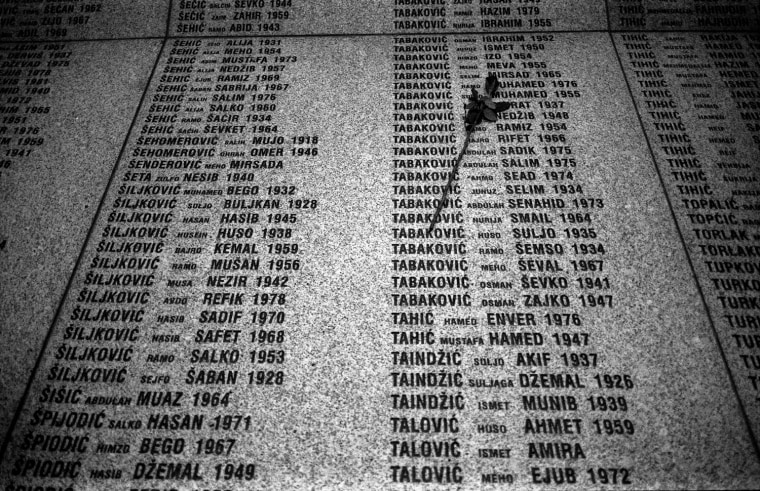
See our slideshow: The charges against Ratko Mladic